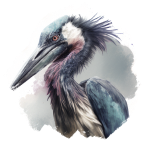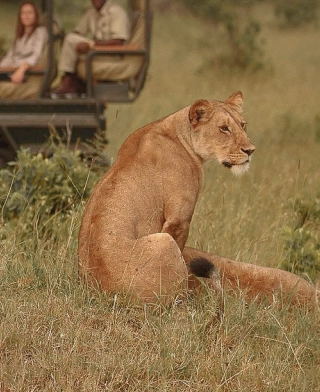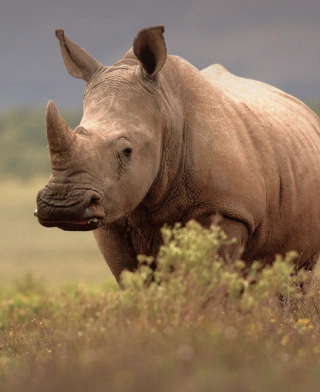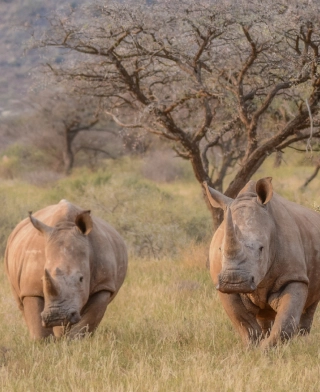
Tarangire National Park
Tarangire National Park – the realm of elephants and baobabs
Tarangire National Park is named after the Tarangire River, the area’s main source of fresh water during the dry season and a vital gathering point for wildlife. Here, you’ll spot large herds of elephants resting along the riverbanks, as well as lions, cheetahs, buffalo, and other iconic animals of the African savannah.
The park’s scenery is just as captivating. You’ll pass through acacia woodlands, marvel at towering century-old baobabs, and enjoy exceptional birdwatching — Tarangire is home to over 550 recorded bird species.
Covering 2,850 km² (1,100 sq mi), Tarangire is larger than Monaco and Vatican City combined. A drive through the park typically takes 4 to 5 hours, revealing a varied landscape of granite ridges, river valleys, seasonal swamps, and salt flats that attract flamingos during dry spells.
If you're looking to experience the raw beauty of untamed African wilderness, Tarangire should be high on your list.
Where is Tarangire National Park located?
Tarangire lies 120 km (75 mi) from Arusha in northern Tanzania. It's about a 2½-hour drive from there.
When is the best time to visit Tarangire

January brings warm, sunny weather, reaching up to 28 °C (82 °F). Occasionally, there are brief thunderstorms. During New Year's, the park is quite busy — factor that into your planning. Still, it’s easy to see elephants, buffalo, zebras, antelopes, and, at dawn or dusk, predators like lions and leopards — at midday, they usually rest in tall grass. These wild creatures are accustomed to safari vehicles and rarely hide.
February temperatures can reach up to 30 °C (86 °F), and rainfall is still rare. This is a vibrant time in the park — you may witness newborn animals, especially wildebeest and zebra calves. One day is often enough to spot most of Africa’s iconic wildlife: elephants, zebras, buffalo, lions, leopards, ostriches, and various antelopes.
It’s one of the most popular months to visit Tarangire. Only by the end of February does the number of tourists begin to drop.
The rainy season typically begins in late March. While temperatures remain warm, sunny days become less frequent. Rain continues through May, and the number of visitors decreases significantly, making it perfect for those seeking a more peaceful experience. The lush, green landscape under looming storm clouds creates a dramatic and unforgettable scene.
March is also ideal for birdwatching. Keep an eye out for Crested Francolins, Hornbills, Steppe Eagles, Lappet-faced Vultures, and endemic Ashy Starlings, among many other species.
April marks the peak of the rainy season, but there’s a silver lining. The park is quieter than usual, and accommodation prices are at their lowest. Rain fills water sources around Tarangire, causing animals to spread out across the surrounding areas, making sightings more challenging than in the dry season. Still, it’s a great month for birdwatchers, as many migratory species arrive during this time.
After April’s peak rains, May sees a gradual decrease in precipitation. Nights become cooler, with temperatures dropping to around 17 °C (63 °F). This is still the low season, making it an excellent time to enjoy luxury lodges at a reduced price. If you visit at the end of May, you might catch good weather and premium service at a bargain.
However, wildlife viewing requires patience — water is abundant, so animals are more spread out. The vegetation grows thick and tall, often hiding smaller creatures from view.
The dry season begins in June, bringing the coolest temperatures of the year, around 24 °C (75 °F), which is ideal for safari. Early mornings can be chilly, so bring warm layers.
This is a fantastic month for wildlife watching. Since it’s the start of the dry season, the landscapes are still green and refreshing. Elephants, buffalo, zebras, antelopes, and lions are all commonly seen, and crowds are still light, making June a perfect time for safari in Tarangire.
By July, the dry season is in full swing. Rain is virtually absent, and temperatures remain pleasant at around 24 °C (75 °F).
Elephants begin digging into the Tarangire Riverbed, attracting other animals to the scarce water. Zebras, antelopes, buffalo, lions, leopards, and other wildlife are everywhere, unafraid of safari vehicles and easy to observe.
Note: July is one of the busiest months, so early planning and booking is recommended.
August continues the dry spell with almost no rainfall. It’s a peak travel month, but also a fantastic time to witness large migrating herds of elephants and other herbivores.
The abundance of prey makes it a prime season for predators — lions, leopards, and cheetahs can often be seen hunting at dawn and dusk.
Expect large crowds, so book your accommodation well in advance.
September is still dry, though brief and rare showers may occur. Like October, it gradually transitions toward the shoulder season.
Temperatures rise to 27–28 °C (81–82 °F), but conditions remain comfortable. Water sources outside the park dry up, drawing bird flocks to swamps and rivers within Tarangire.
It’s one of the busiest months in Tanzania, so plan your safari early.
Rain increases slightly in October, but weather remains stable, with daytime highs of 28–29 °C (82–84 °F). This is the final month of the dry season.
The Tarangire River shrinks to a stream, and the landscape becomes increasingly arid. As the dry season ends, wildlife becomes more active, and hunting scenes are more frequent, adding excitement to safaris. Late October may bring dramatic, distant thunderstorms.
November ushers in a dramatic weather shift with frequent and heavy rains, though clear skies can still break through.
Even during this wet season, Tarangire offers memorable safari experiences. The river fills again, and the parched vegetation starts turning green.
This is a stunning time for photography and video, offering the chance to capture the landscape's renewal and the vivid activity of its wildlife.
The rains continue through December, with temperatures holding at around 29 °C (84 °F).
Expect frequent showers and thunderstorms. Wildlife becomes harder to spot, as many animals retreat to remote corners of the park and hide in dense greenery. Still, the air fills with the vibrant sounds of migratory birds, making it a great time for birdwatching enthusiasts.
What to see in Tarangire National Park?
Giant baobabs rising over endless plains, acacia forests, and massive elephants digging through the riverbed — Tarangire is pure, wild nature, unchanged for thousands of years. It’s like a time machine that immerses you in the raw beauty of real Africa. This is where unforgettable memories are made.
Ancient baobabs
Here, you’ll find ancient giants — baobab trees that have lived for hundreds of years. Just imagine: the trunk of one can reach up to 30 meters (100 feet) in circumference.

Elephant populations
Tarangire is home to one of the largest elephant populations in Tanzania. During the dry season, enormous herds of up to 300 individuals roam the park. It’s one of the best places in Africa to see elephants in their natural habitat.

Over 550 bird species
The park’s wetlands attract a huge variety of birds, making it a paradise for birdwatchers. One standout species is the Kori Bustard — the heaviest flying bird in the world, weighing up to 20 kg (44 lbs).

Giraffes
Tarangire is an excellent spot to observe giraffes. A rare white giraffe named Omo has even been seen here. While not an albino, Omo has a condition called leucism, which affects skin pigmentation. Researchers say she’s healthy, and though sightings are rare, lucky visitors sometimes spot her.

Red termite mounds
All across Tarangire, massive red termite mounds rise like towers — some are more than twice the height of a person. These incredible structures are built by some of the tiniest residents of the savannah.

Sausage trees
Another quirky highlight of the park is the sausage tree (Kigelia), a favorite spot for lounging lions. The tree gets its name from its unusual fruits that resemble sausages hanging from the branches.

What other animals can you see in Tarangire?
Elephants are the stars of the park — from tiny calves to towering adults carefully guarding their young. But the park’s ecosystem is home to far more:
Tarangire has the second-highest concentration of wildlife in Tanzania, after Serengeti. While spotting all members of the Big Five isn’t guaranteed, dry season visitors often see lions, leopards, and even cheetahs on the hunt.

History of Tarangire National Park, Tanzania
Tarangire was officially declared a national park in 1970, making it one of Tanzania’s oldest. Initially established to protect local wildlife, it’s now a major conservation area and a popular destination for travelers from around the world.
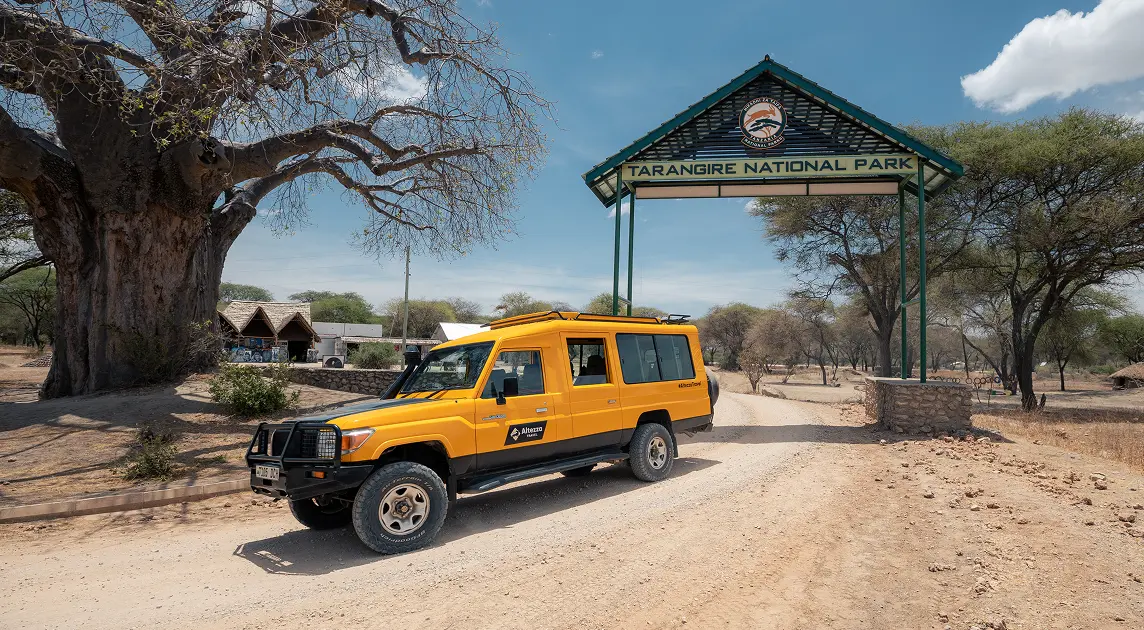
In the early 1900s, the British colonial government began setting up reserves across Tanzania to protect endangered species. Tarangire was granted reserve status in 1951 and became a national park in 1970. Today, the park is located near communities of the Maasai — one of Africa’s most iconic ethnic groups.
Conservation projects in Tarangire
The park supports rich biodiversity, and TANAPA (Tanzania National Parks Authority) runs various conservation programs here — from anti-poaching efforts to scientific research. Tarangire plays a critical role in protecting several endangered species.
Community partnerships
TANAPA encourages local communities living in nearby reserves to participate in conservation efforts. For example, the authority helps employ local residents, which reduces their incentive to engage in poaching.
Anti-poaching initiatives
Poaching remains a major threat. To combat it, the park is regularly patrolled by rangers and monitored by air.
Research projects
The park is also a hub for scientific research. One example is ongoing predator-prey monitoring and flora/fauna surveys. In 2024, Altezza Travel sponsored a project to track African wild dogs in the park using GPS collars.
Safari in Tarangire National Park
One of the main ways to explore Tarangire is by going on game drives in 4x4 vehicles or taking scenic hot air balloon rides. You can also enjoy exciting night drives, walking safaris, and bush hikes — both inside the park and in nearby conservation areas.
Night game drives
Armed with powerful spotlights and accompanied by an experienced guide, you’ll set off on an unforgettable adventure after sunset. While the park is quieter at night than during the day, this is when the elusive nocturnal animals of the savanna come to life — creatures rarely seen in daylight. These drives take place both within Tarangire itself and in surrounding areas. To join a night safari, you’ll need to stay at a lodge inside the park or on its border.

Hot air balloon rides
Like many Tanzanian national parks, Tarangire does not allow drones. However, you can still enjoy breathtaking aerial views during a hot air balloon safari. It’s a chance to take stunning photos and videos of the park’s dramatic landscapes from above.

Walking safaris
A bush walk — a guided stroll through the savanna — offers a completely different experience from traditional vehicle safaris. It’s a great way to add variety to your trip, stretch your legs, and explore the landscape up close. A walking safari usually lasts around 1 to 1.5 hours and is led by an armed ranger who ensures your safety and shares fascinating insights about the local plants and animals. You’re less likely to encounter large exotic wildlife on foot, but you’ll have better opportunities to observe birds and smaller creatures in their natural habitat.

FAQ
How do I get to Tarangire?
You can reach Tarangire from Arusha, a city in northern Tanzania. The drive takes around 2.5 hours. In fact, many of our safari itineraries list Tarangire as the first park to visit.
When is the best time to visit Tarangire?
Tarangire is open year-round, and each season has its own advantages. From June to September, many animals gather in the park, but this is also peak season with more tourists and higher prices. October still offers great wildlife viewing, but with fewer visitors.
Starting in November, the off-season begins with the arrival of short rains that gradually become more frequent and intense. During this time, the park becomes lush and green — beautiful, but it’s harder to spot animals in the thick vegetation. However, there are fewer tourists, and conditions for birdwatching are excellent.
What accommodation options are available in Tarangire?
Tarangire offers a wide range of lodging, from safari lodges and traditional hotels to luxury tented camps, both inside the park and nearby, to suit all budgets and preferences.
How many days are needed to explore Tarangire?
You can see some highlights in one day, but to truly immerse yourself in the wild, plan for 2–3 days. This gives you time for game drives, birdwatching, and enjoying the captivating landscapes. For a deeper experience, stays of one to two weeks are also rewarding.
Are there picnic or lunch spots in the park?
Yes — Tarangire has designated picnic areas equipped with tables, benches, and toilets. These spots are perfect for relaxing and refueling before continuing your safari adventure.
Can I visit Tarangire, Tanzania with children?
Yes, Tarangire National Park is well-suited for family travel — there are accommodation options that cater to families with children. You can learn more about going on safari with kids in our dedicated article.
What should I pack for a Tarangire safari?
We’ve prepared a detailed safari packing guide that covers essential clothing, footwear, and gear. Be sure to check it out before you travel.

















 View Sample Safari itinerary
View Sample Safari itinerary 







